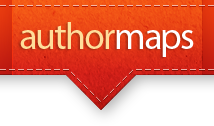Even Famous Authors Self-Publish
The Burglar Who Counted the Spoons: A Bernie Rhodenbarr Mystery by Lawrence Block (copyright 2013)
Lawrence Block is an award-winning best-selling author of several book series and short stories. Block is most famous for his Burglar mysteries.
Block’s Burglar books feature Bernie Rhodenbarr. Bernie is a bookseller by day and high-class thief by night.
This series of ten books began in 1977 with Burglars Can’t be Choosers, and seemed to end in 2004 with Burglar on the Prowl.
Then nearly ten years later, in 2013, The Burglar Who Counted Spoons came out as a self-published book by Block.
There were some notable difference between Prowl and Spoons.
The front covers
In keeping with previous books in the series, Prowl prominently features the author’s first and last name in block letters across the top and left side of the front cover. An image with the book’s title is off-center on the right.
Spoons has a single image dead center in the cover. That’s a potential tip-off of an amateur designer. There’s no artistic composition to move the eyes. Also, the author’s name is in smaller type than the title and it’s at the very bottom of the cover.
The covers of published Burglar books feature the author’s name in bigger type than the titles because Block’s books were blockbuster sellers. He’s still a famous author, but the new cover of Spoons doesn’t show that. Instead, Spoons’ cover says “self-published book”.
The page headings
The designer of Spoons interior decided to emphasize Block’s name inside the book instead of on the cover.
The header on each page uses ALL CAPITAL LETTERS in bold type and an underline to announce the book title and the author’s name.
As if that weren’t enough, the header underline extends all the way across the top of each page.
This kind of font emphasis overkill is also a telltale sign of a self-published book.
The book’s text
In spite of the published book’s play on the author’s last name with block letters, the text of a book should not look “blocky”. Spoons’ text looks quite blocky.
The paragraph indents are much deeper than the usual published book. The spacing between letters of the text (i.e. kerning) is very narrow. And to make matters worse, the spacing between lines (i.e. leading) is very small too.
Each of these faults make reading the text slower. Together, they make reading a book tedious.
The page margins and binding
If you use the Look Inside! feature on Amazon to compare a page of text in Spoons to a print book from his publisher, you can see that the margins of Spoon’s text pages are narrower than usual. The margins are symmetrical, rather than a bit larger on one side than the other to make allowance for the binding.
Narrower margins also contribute to difficulty in reading the already-crowded text on pages.
Cheaply-glued binding is another sign of possible trouble. A self-published print book that can’t easily be opened fully and laid flat is more likely to lose its pages if library readers “break” its spine too many times.
The back cover
Most publishers use the back cover of a print book to help sell the author’s book.
For example, back covers print praise for the book and excerpts from pre-publication reviews of it or previous works of the author. Back covers usually include a short summary of the book as well and/or images from inside it.
Spoons has a full-page photo of Lawrence Block on the back cover. Given the popularity of this series and its author, that’s probably all that is needed. But for most authors it isn’t. Nor are the book’s design flaws to be emulated.
The publishing industry has evolved design standards over centuries in order to make reading more accessible for everyone. Many new editors, designers, and POD companies are not aware of these important conventions.
But Librarians look for these conventions and for one more sign of a good-quality book.
The copyright page
On the verso (back) of the title page is the copyright page. In the bottom part of this page librarians from the Library of Congress cataloging unit or elsewhere provide publishers with official CIP (cataloging-in-print) data. CIP is an abbreviated library-catalog record for that book.
Note that Block’s Proof has a CIP record; Spoons does not. Spoons merely has a copyright notice and the required ISBN (International Standard Book Number) that every book for sale must have.
Lack of CIP data on the verso of the title page is a sure way to tell if a book is self-published.
Why care about the differences?
Librarians prefer to buy fiction and non-fiction books with official CIP data on the verso of the title page. They know another librarian deemed it suitable for library purchase.
For a famous author, lack of CIP data isn’t a barrier to getting their book or ebook into a library. That’s because librarians rely on various book-review sources to confirm their book-buying decisions and use Overdrive and other library vendors to help select ebooks.
But for the rest of us, lack of official CIP data could be a serious obstacle. CIP data is helpful too, and available for purchase by self-publishing authors.
To sell books to libraries, self-publishers need the best editing and design we can afford. Lawrence Block can get away with creating a cheaply-made book. Most of us who self-publish can’t afford to take that risk.








